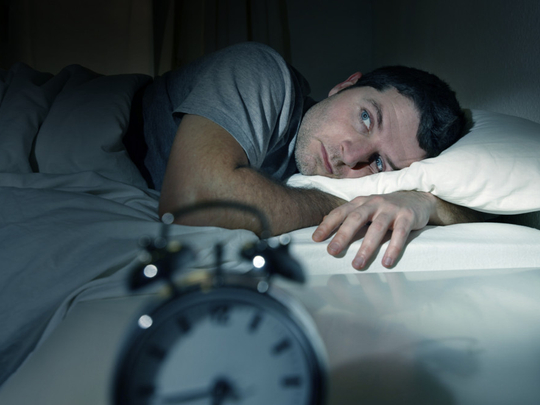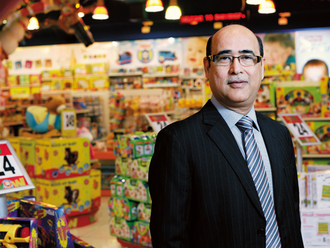
I don’t remember having trouble sleeping — until my late teens. There was no grand trauma, no “aha” moment to pinpoint when my sleep was disrupted. I just sort of drifted into insomnia. And there I have stayed, on and off, for almost 15 years.
It has meant exhausted days and nights stretched out in front of me like the Grand Canyon . I have tried to remedy it over the years, using pills (soft herbal brands and the hard big pharma types), sprays (top picks: lavender and frankincense), a variety of “calming” sounds (including whale, panpipes and white noise) and, of course, the gold-level option of “wishing really hard”.
Sleep, as I learnt via A-level psychology, is a chance to relax and literally do nothing (except allow my subconscious to sort through the day’s events), and yet I was switched on, sometimes all through the night. My problem is night sleeping — I either wake up during the night or fail to fall asleep in the first place (during the day, I drift off on trains, buses and in cars).
I average about four-and-a-half hours a night, which is not ideal for a rich human life. I’ve got used to not sleeping; in film-learnt therapy-speak, I think that means I’ve hit rock bottom, which makes it the perfect time to see Dr Guy Meadows, the clinical director of The Sleep School .
Dr Guy (that’s how he introduces himself) is a chirpy sort and I like him immediately. He explains that insomnia is essentially learnt behaviour: if you don’t sleep, your body gets used to not sleeping.
“Sleep is natural,” he says, before engaging me in a game of tug of war with my scarf. He yanks at it and asks what my natural response to that is. In reply, I tug back. “Exactly,” he says, delighted by my human predictability. Rather than classic cognitive behavioural therapy , Dr Guy uses acceptance and commitment therapy , which, according to his guide “The Sleep Book”, “recognises that it is our struggle or reaction to pain and suffering that actually makes them worse”. The key is to not aggressively “chase” sleep but rather to “let go of the rope”.
I cannot lie: I’m sceptical. But nothing I’ve done so far has worked, so who am I to argue? I am reassured by the sleep “ hypnogram “ Dr Guy draws me, which shows the patterns of normal sleep and the exact ways in which my sleep is utterly borked — you’re supposed to wake up over the course of a night, but also to drop straight back. We talk about sleep regulation, including “sleep and wake drives” that work in tandem with the circadian body clock to regulate sleepiness and wakefulness, and why naps are only a short-term fix (there’s been a lot of follow-up reading, believe me).
We talk about orange light (soothing and sleep-inducing) and blue light (this induces wakefulness; it is the type of light that smartphone screens emit). He concludes that I am an “owl” and this, plus modern humans’ generally overstimulated eyes and minds, may have exacerbated my sleeplessness over the years.
I implement Dr Guy’s advice straight away. That means I start “darkening down” two hours before bed and I shut off my phone half an hour before. He also asks me to set a reasonable bedtime, which I put at 12.30am, with a plan to get out of bed no later than 7.30am. We even do a bit of mindfulness, which I’ve been encouraged to do by myself on my work commute — three minutes, three times a day. I do “welcoming/diffusing exercises” in which I repeat my anxious bedtime thoughts to the tune of Happy Birthday, and prefix them with “I am having the thought that ...”
Does it work? It’s too soon to say definitively. The new bedtime routine is my biggest breakthrough. I feel like a baby, but it helps to have an actual bedtime. The diffusing exercises are also potent, creating a necessary distance between myself and my thoughts. So far, I am mostly sleeping through the night. I’m not 100 per cent there yet: some nights I work until 1.30am and on my days off I laze in bed until 8.30am. But this is a long-term process and for the first time in ages, I am optimistic about licking this insomnia. Sweet dreams.
Dr Guy’s sleep advice for insomniacs
The tug of war is a metaphor I use to convey our human nature to want to win — to beat things, to overcome a problem and control it. Our natural instincts kick in during a tug of war: one person pulls and the other wants to pull back. Over time, it is exhausting and frustrating. When we encounter sleeplessness, we apply the same methodology. We fight against it. We try to do things to make ourselves go to sleep — have a hot bath, drink a warm milk, count sheep. All the advice out there about dealing with insomnia is about “doing” something to help.
The paradox is that sleeping requires us to do absolutely nothing. If you ask a normal sleeper how they do it, they will tell you they do nothing. But if you ask an insomniac, they will give you have a list as long as their arm. My theory is that it is doing all these things to help us get to sleep that is part of the problem.
What can we do to improve the situation? Well, let go. Letting go is about acceptance and a willingness to be awake in bed. It’s about accepting everything that goes along with insomnia — the worry, anxiety. I teach my patients to use mindfulness to observe all these feelings, and let them be. When people are finally OK with being awake, they don’t get in the way of sleep.
–Guardian News & Media Ltd













